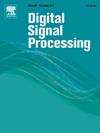DAMMD-Net: A lightweight and enhanced deep segmentation network for skin lesion detection
IF 2.9
3区 工程技术
Q2 ENGINEERING, ELECTRICAL & ELECTRONIC
引用次数: 0
Abstract
Early and accurate diagnosis of skin cancer is critical to improving survival rates. Dermoscopy is one of the most important imaging techniques for this purpose. However, manual examination of dermoscopic images is laborious, time-consuming, and error-prone due to variations in the color, shape, location, texture, and size of skin lesions. Therefore, developing automatic segmentation models is crucial for assisting physicians in both qualitative and quantitative assessments. Although numerous deep learning-based segmentation models have produced satisfactory results in skin lesion detection, their backbone architectures still face intrinsic limitations and extrinsic challenges. In light of this motivation, this paper proposes a lightweight and enhanced segmentation network (DAMMD-Net) based on the DeepLabV3+ model, with an attention mechanism (AAC) and modified decoder to improve segmentation performance. The AAC is used as a local feature enhancement tool to address the interference of useless information related to healthy skin. The modified decoder module enhances the network's ability to capture spatial details and integrate contextual information by leveraging multi-level feature maps from the encoder. The proposed segmentation pipeline has been evaluated on two well-known benchmark datasets: ISIC2018 and PH2. The experimental results showed that DAMMD-Net achieved an average Dice similarity coefficient (DSC) of 0.887 for the ISIC2018 dataset and 0.929 for the PH2 dataset, outperforming the backbone network. The overall results revealed that the proposed DAMMD-Net not only achieved satisfactory performance compared to existing models but also demonstrated significant potential for clinical practice due to its lightweight architecture.

DAMMD-Net:一种用于皮肤病变检测的轻量级增强深度分割网络
皮肤癌的早期和准确诊断对提高生存率至关重要。皮肤镜检查是这方面最重要的成像技术之一。然而,由于皮肤病变的颜色、形状、位置、质地和大小的变化,人工检查皮肤镜图像既费力又耗时,而且容易出错。因此,开发自动分割模型对于协助医生进行定性和定量评估至关重要。尽管许多基于深度学习的分割模型在皮肤病变检测中取得了令人满意的结果,但它们的主干结构仍然面临着内在的局限性和外在的挑战。基于这一动机,本文提出了一种基于DeepLabV3+模型的轻量级增强型分割网络(DAMMD-Net),采用注意机制(AAC)和改进的解码器来提高分割性能。AAC被用作局部特征增强工具,以解决与健康皮肤相关的无用信息的干扰。改进后的解码器模块通过利用编码器的多级特征图,增强了网络捕获空间细节和集成上下文信息的能力。所提出的分割管道已经在两个著名的基准数据集ISIC2018和PH2上进行了评估。实验结果表明,DAMMD-Net在ISIC2018数据集和PH2数据集上的平均Dice相似系数(DSC)分别为0.887和0.929,优于骨干网。总体结果表明,与现有模型相比,所提出的DAMMD-Net不仅取得了令人满意的性能,而且由于其轻量级架构,在临床实践中显示出巨大的潜力。
本文章由计算机程序翻译,如有差异,请以英文原文为准。
求助全文
约1分钟内获得全文
求助全文
来源期刊

Digital Signal Processing
工程技术-工程:电子与电气
CiteScore
5.30
自引率
17.20%
发文量
435
审稿时长
66 days
期刊介绍:
Digital Signal Processing: A Review Journal is one of the oldest and most established journals in the field of signal processing yet it aims to be the most innovative. The Journal invites top quality research articles at the frontiers of research in all aspects of signal processing. Our objective is to provide a platform for the publication of ground-breaking research in signal processing with both academic and industrial appeal.
The journal has a special emphasis on statistical signal processing methodology such as Bayesian signal processing, and encourages articles on emerging applications of signal processing such as:
• big data• machine learning• internet of things• information security• systems biology and computational biology,• financial time series analysis,• autonomous vehicles,• quantum computing,• neuromorphic engineering,• human-computer interaction and intelligent user interfaces,• environmental signal processing,• geophysical signal processing including seismic signal processing,• chemioinformatics and bioinformatics,• audio, visual and performance arts,• disaster management and prevention,• renewable energy,
 求助内容:
求助内容: 应助结果提醒方式:
应助结果提醒方式:


